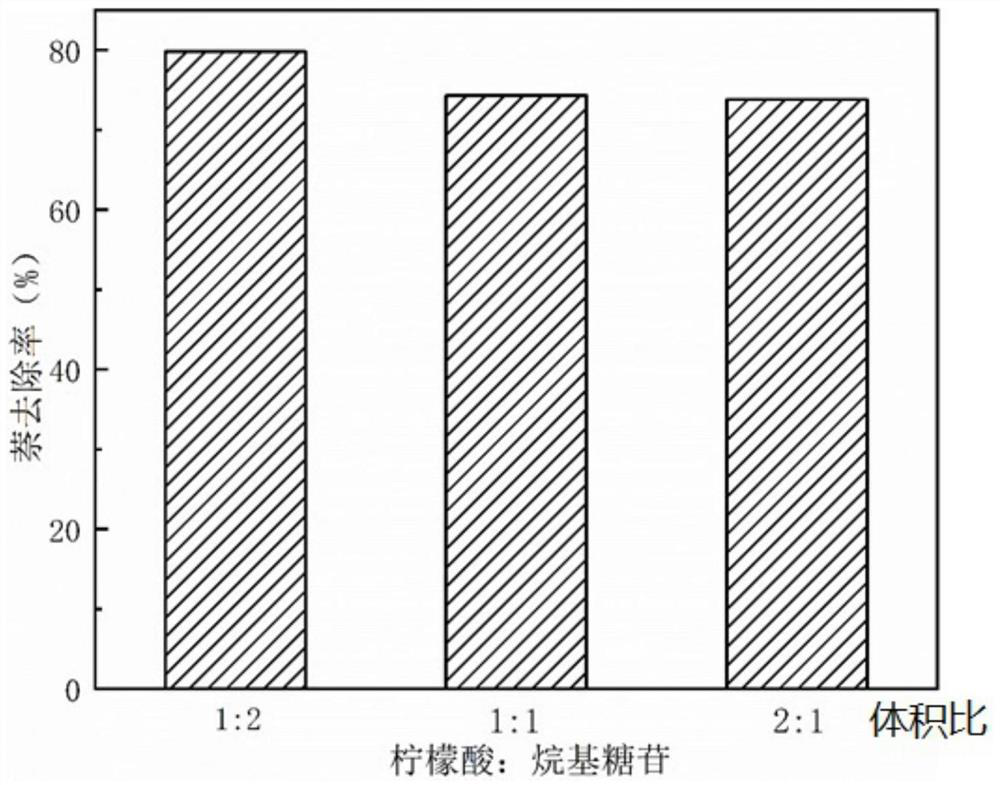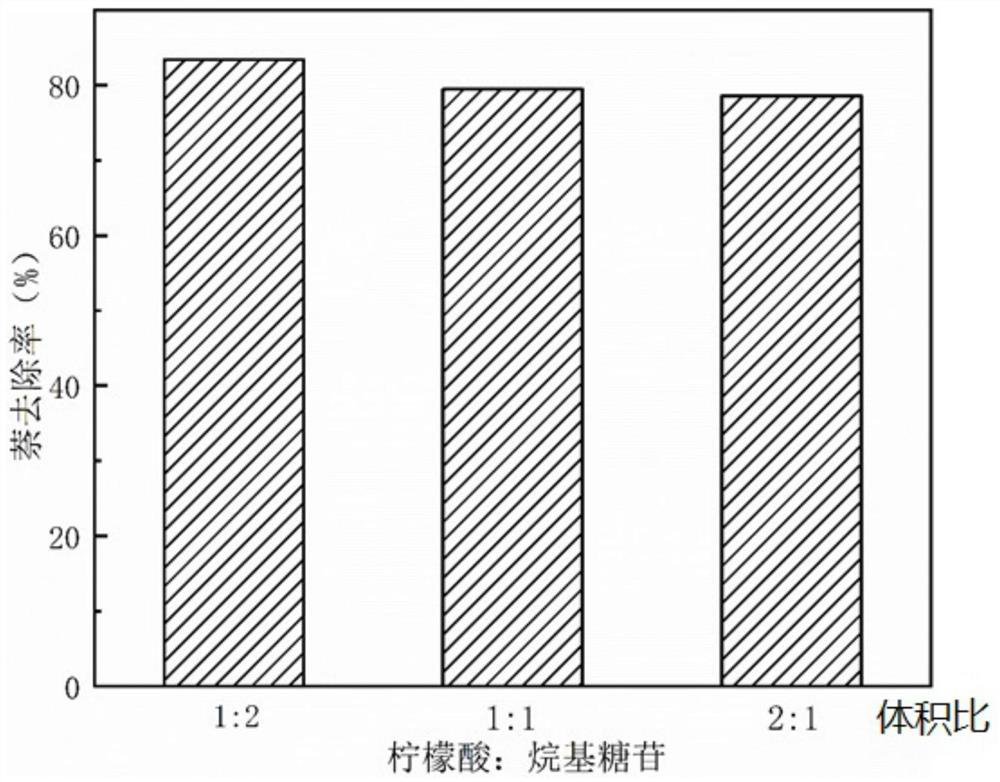A compound eluent for remediating polycyclic aromatic hydrocarbon-contaminated soil and its application
A technology for polycyclic aromatic hydrocarbons and polluted soil, applied in the field of contaminated soil remediation, can solve problems such as refractory biodegradation, secondary pollution, and increased soil acidity, and achieve the effects of reducing adsorption, improving solubilization, and promoting desorption
- Summary
- Abstract
- Description
- Claims
- Application Information
AI Technical Summary
Problems solved by technology
Method used
Image
Examples
Embodiment 1
[0045] The above-mentioned compound eluent is used to remediate polycyclic aromatic hydrocarbon-contaminated soil (the contaminated soil taken is recorded as soil A, and the specific components and other performance data are shown in Table 1), specifically including the following steps:
[0046] (1) Dry the soil A, remove the fallen leaves and gravel and pass through a 60-mesh sieve after grinding, dissolve 20 mg of solid naphthalene in 160 mL of acetone at room temperature, then mix the acetone solution containing naphthalene with 200 g of soil A Shake and mix in a constant temperature shaking box at 20°C for one week, then place in a fume hood to volatilize acetone, and artificially polluted soil is aged at 4°C for two weeks before use.
[0047] (2) the concentration is 0.2g / L citric acid solution (solvent is ultrapure water, the same below) and the concentration is 10.0g / L alkyl glycoside APG0814 solution (solvent is ultrapure water, the same below) by volume ratio 1:2, 1:1...
Embodiment 2
[0052] The above-mentioned compound eluent is used to remediate polycyclic aromatic hydrocarbon-contaminated soil (the contaminated soil taken is recorded as soil B, and the specific components and other performance data are shown in Table 1), specifically including the following steps:
[0053] (1) Dry the soil B, remove the fallen leaves and gravel and pass through a 60-mesh sieve after grinding, dissolve 20 mg of solid naphthalene in 160 mL of acetone at room temperature, then mix the acetone solution containing naphthalene with 200 g of soil B Shake and mix in a constant temperature shaking box at 20°C for one week, then place in a fume hood to volatilize acetone, and use artificially polluted soil after aging at 4°C for two weeks.
[0054] (2) Mix the citric acid solution with a concentration of 0.2g / L and the alkyl glycoside APG0814 solution with a concentration of 10.0g / L at a volume ratio of 1:2, 1:1 or 2:1, respectively as a compound rinse Agent I, compound eluent II ...
Embodiment 3
[0059] The above-mentioned compound eluent is used to remediate polycyclic aromatic hydrocarbon-contaminated soil (the contaminated soil taken is recorded as soil C, and the specific components and other performance data are shown in Table 1), specifically including the following steps:
[0060] (1) Dry the soil C, remove the dead leaves and gravel and grind it through a 60-mesh sieve, dissolve 20 mg of solid naphthalene in 160 mL of acetone at room temperature, then mix the acetone solution containing naphthalene with 200 g of soil C Shake and mix in a constant temperature shaking box at 20°C for one week, then place in a fume hood to volatilize acetone, and artificially polluted soil is aged at 4°C for two weeks before use.
[0061] (2) Mix the citric acid solution with a concentration of 0.2g / L and the alkyl glycoside APG0814 solution with a concentration of 10.0g / L at a volume ratio of 1:2, 1:1 or 2:1, respectively as a compound rinse Agent I, compound eluent II and compou...
PUM
 Login to View More
Login to View More Abstract
Description
Claims
Application Information
 Login to View More
Login to View More - R&D
- Intellectual Property
- Life Sciences
- Materials
- Tech Scout
- Unparalleled Data Quality
- Higher Quality Content
- 60% Fewer Hallucinations
Browse by: Latest US Patents, China's latest patents, Technical Efficacy Thesaurus, Application Domain, Technology Topic, Popular Technical Reports.
© 2025 PatSnap. All rights reserved.Legal|Privacy policy|Modern Slavery Act Transparency Statement|Sitemap|About US| Contact US: help@patsnap.com



